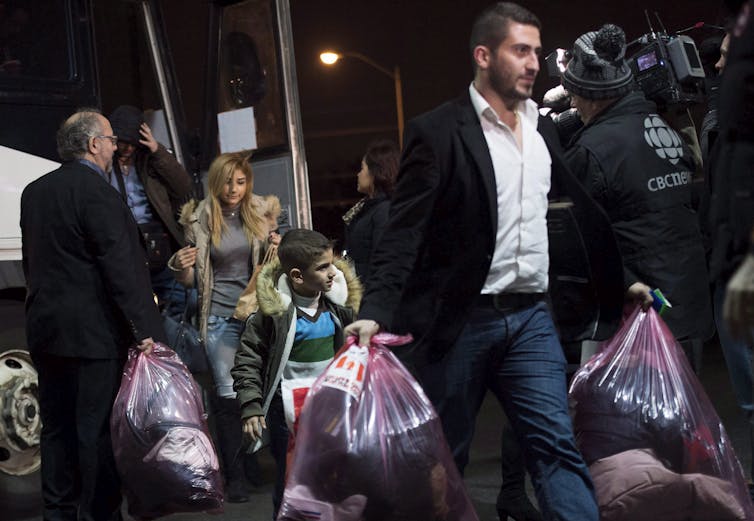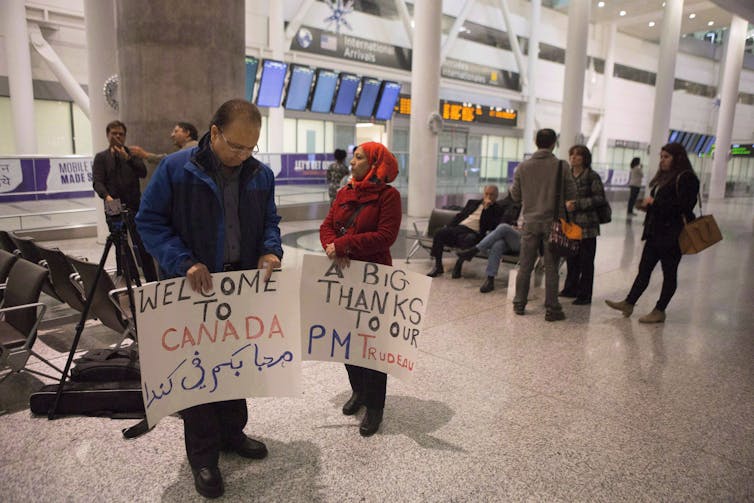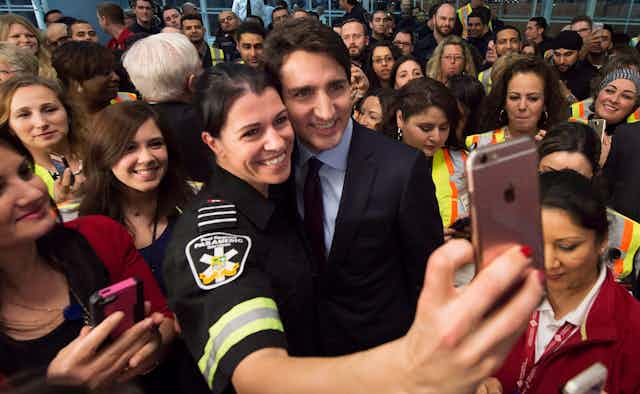Four years ago, one of Prime Minister Justin Trudeau’s signature election promises was to invite refugees escaping civil war in Syria into Canada. Canadians from coast to coast demonstrated their support for the initiative by raising funds and personally sponsoring refugee families.
After the election, Trudeau delivered on his campaign promise to rapidly resettle 25,000 Syrian refugees. Under the resettlement initiative known as Operation Syrian Refugees, 26,172 Syrian refugees were resettled in Canada within 118 days, between November 2015 and February 2016, with one of the first government-arranged flights landing on Dec. 10, 2015.
Canada has long been regarded as a world leader in refugee resettlement — and recently resettled more refugees than any other country (28,100). But Operation Syrian Refugees was unprecedented. The only comparable event was more than 35 years before with the arrival of 60,000 Indo-Chinese refugees.
Four years later, how are these Syrian refugees doing? The overall outcomes of Syrian refugees’ resettlement and integration experiences are positive, showing encouraging trends in terms of their adjustment to life in Canada and participation in society.
That said, challenges remain.

Syrian refugees welcomed
A recent report by Immigration, Refugees and Citizenship Canada (IRCC) on Syrian refugees’ integration outcomes suggests that Syrian refugees are faring well in Canada.
Canada has a long history of welcoming refugees from around the world and Syrian refugees felt the strength of that welcome.
This sense of welcome has translated into new Syrian-Canadians reporting a strong sense of belonging both to Canada (90 per cent) and to local communities (84 per cent). Syrian refugees are connecting and developing ties through volunteer opportunities and making friends at community centres and at their children’s schools.
Compared to other refugee groups that arrived at the same time, Syrian refugees accessed and used settlement and other related support services funded by the federal government at higher rates, including information and orientation services and language training.
Nearly all of the government-assisted Syrian refugees attended orientation services and information workshops. Almost 80 per cent of Syrian refugees took government-funded language classes. By 2018, over 90 per cent of Syrian refugees indicated they were able to complete most daily tasks like grocery shopping and doctor visits in English.
Compared to other resettled refugees, Syrian refugees are ahead when it comes to employment and finding work. By 2018, after about two to three years in Canada, 57 per cent of Syrian-Canadians reported they were employed; 23 per cent were looking for work. Syrian refugees’ wages in Canada have gradually increased and their use of provincial social assistance is similar to those of other resettled groups.
Challenges for refugees in Canada
A number of challenges remain for Syrian youth and students. Some Syrian youth had to re-start their education. Because of this, they have faced challenges in school, including language, social and academic barriers. These barriers will need to be addressed and monitored closely.

Nearly one quarter of Syrian refugees said they sometimes — or often — did not have enough food.
Some Syrian refugees are reluctant to access formal mental health services due to the stigma associated with accessing these services in their communities.
As we discuss in our forthcoming book, A National Project: Canada’s Syrian Refugee Resettlement Experience to be published by McGill-Queen’s University Press this spring, it is important to continue to monitor these outcomes.
We believe it is important to look at potential gender differences and also to look at differences in outcomes for Syrian refugees who came to Canada under different refugee categories — whether they were privately sponsored or government assisted, for example.
Collecting better migration data
Through their approach to Operation Syrian Refugees, Canadian policymakers demonstrated the critical importance of having a performance measurement and outcomes plan in place from the very beginning. In this way, Immigration, Refugees and Citizenship Canada was forward thinking.
Operation Syrian Refugees offers a compelling example of how governments can gather robust data and share it with local, national and international organizations, as well as the general public. This information is all part of the effort to communicate the costs and benefits of meeting Canada’s international obligation to resettle refugees.
The importance of collecting better migration data is part of the first objective of the Global Compact for Safe, Orderly and Regular Migration. The Global Compact is the first-ever global agreement on a common approach to international migration in all its dimensions. The nonbinding agreement was signed by 152 UN member states and adopted in December 2018. It includes 23 objectives aimed at better managing migration at local, national, regional and global levels.
Canada has demonstrated its commitment to these ideals. The federal government has widely shared their refugee outcomes report with the Canadian public. This data sharing has been especially important for politicians, community leaders and academic researchers. It also allows for accurate reporting in the news media.
A culture of informed public debate
Ultimately, the information gathered helps to build a culture of informed debate. This accuracy is important to help weaken populist rhetoric.
The success of recording and sharing this information was apparent in the recent Canadian federal election. Despite the potential for immigration policy to act as a wedge issue, public debate on the matter was balanced and informed.
The only political party that publicly ran on the promise to reduce immigration numbers did not win a single seat.

